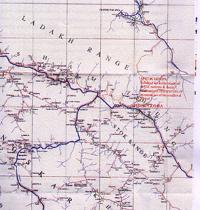Anuradha Chaturvedi
Grant Period: Over two years
The Ladakh region of the Western Himalayas has regularly attracted botanists and anthropologists in almost equal measure seeking to understand its unusual if bleak natural environment and distinct social and cultural traditions respectively. Its difficult access meant that Ladakh developed a relatively secluded existence. This seclusion however did not prevent it from forging close links with China and Tibet and neighbouring regions in Kashmir. These bonds, nurtured by its location along the historic ‘silk route’, also helped Ladakh evolve a distinctly syncretic culture.
Anuradha Chaturvedi, architect, conservation consultant, and principal investigator on this project, is however fascinated by the spectacularly rich and distinctive vernacular building crafts that characterises the Ladakh, Zanskar and Nubra valley. This project seeks to develop a comprehensive database and undertake a comparative technical assessment of the historic building craft traditions of the aforementioned regions. This will include assessing the performance of building materials in their contemporary context, documenting decay mechanisms and causes of deterioration while also suggesting appropriate rectification measures and conservation guidelines. The researchers also intend to document the processes and techniques involved, while simultaneously mapping the sources of indigenous building crafts materials. A compilation of a list of skilled local practitioners and a summary of a cost-benefit analysis of using these crafts today, both financial and environmental, are among the projected outcomes of this research study.
Chaturvedi and her associate propose this study to be an action-oriented research that will facilitate appropriate and participatory conservation intervention in the Ladakh region. By partnering with local organisations and groups concerned with built heritage, the researchers hope to explore the possibility of the continued use of these building systems, materials and techniques, in the contemporary context. Chaturvedi notes with concern the fast disappearing local masonry and carpentry skills, traditional interior plastering experts and appropriate building crafts materials. The few remaining traditional practitioners are said to use a hybrid style of the Leh region even for the repair of historic buildings in other areas. The older carved and painted decorative woodwork patterns are in danger of being effaced and obliterated by repair work and are often replaced by new elements that reflect influences of contemporary Tibetan floral patterns.
The mural paintings – of which only one preliminary technical assessment of the materials and processes involved, has been done till date – are highly endangered due to neglect, material deterioration, damage due to moisture intrusion, repainting by local residents, as well as well-intentioned but inadequately informed attempts at restoration. This research project will study both the materials and processes used in these paintings as well as explore appropriate methods and materials for their consolidation and conservation. This will then be made available to the various agencies and individuals working in the field of heritage conservation in Ladakh.
Chaturvedi cautions that various factors, including climate, tourism and an increased dependence on government sponsored conservation initiatives have led to a complex process of degeneration and gradual decay of the historically built resources and diverse and multi-faceted building crafts traditions while also leading to irreparable cultural loss. It is in this context that the team hopes to contribute towards increased awareness of heritage issues, and plan and facilitate participatory conservation projects. Project outcomes include a directory of building-crafts systems, crafts-persons and a conservation-related database and manual.


